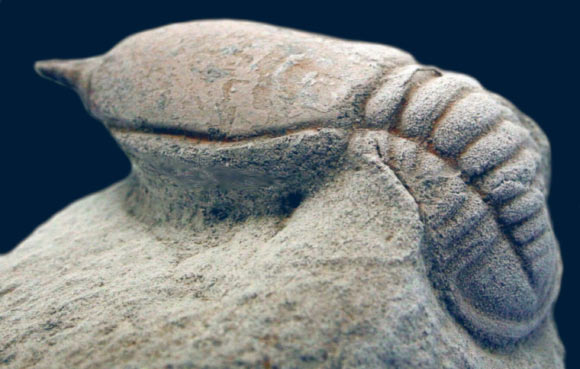Trilobites were a diverse group of ancient marine arthropods. Many trilobites lived on the seafloor but some occupied open water. New research has resolved the evolutionary history of a bizarre group of trilobites called the cyclopygids, named after the mythical one-eyed monster Cyclops, as their eyes gradually merged into a single large visual surface as they evolved.

Trilobites were ancient aquatic creepy-crawlies (arthropods) that lived between 521 Million years ago (Ma) to 252 Ma.
Around 21,000 species are known and they occupied many ecological niches; most lived on the seafloor (benthic) but some lived in the open ocean (pelagic).
Despite their diversity, we know relatively little about their overall evolutionary history.
One bizarre group of mainly Ordovician (485 to 444 Ma) trilobites are called cyclopygids, with 5 to 7 body (thoracic) segments and no genal spines at the corners of their head (cephalon).
Cyclopygids are named after the (Greek) mythical Cyclops because their eyes merged into one large visual surface with a wide angle of view as they evolved.
Cyclopygids lived in the deep, dark parts of the ocean (mesopelagic) — swimming at the lower limit of the photic zone — the so-called Twilight Zone, actively hunting small animals (zooplankton).
Some cyclopygids, such as Pricyclopyge, probably swam upside down and had light emitting (bioluminescent) organs on their third thoracic segment.
New research has resolved the evolutionary history of 47 cyclopygid genera using cladistic analysis, a method that groups organisms based on their shared derived characteristics.
A family called the Taihungshaniidae, mostly known from China, are basal to the families Nileidae and Cyclopygidae, the latter united by their enlarged (hypertrophied) eyes and include Illaenopsis, a supposed nileid.
As cyclopygids evolved they developed increased adaptations to a pelagic lifestyle, including larger eyes that gradually shifted to the edge of their cephalon, a…
Read the full article here
